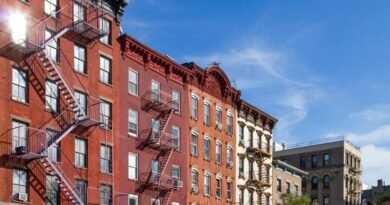NYC Mayor Eric Adams’ Independent Stance: A Victory for Electoral Diversity

Mayor Adams’s choice to run as an independent in the upcoming final election this November has often been viewed as a mere tactic to enhance his dwindling re-election prospects.
Typical of the criticism, Democratic Socialist mayoral contender Zohran Mamdani, an Assembly member from Queens, labeled Adams a “self-interested, disgraced mayor who prioritizes his own needs above those of the people.”
However, the significance of Adams’ announcement has largely been overlooked in the days since, overshadowed by discussions of tariff conflicts and framed simply as a personal strategy. Adams, the first sitting city mayor to face indictment, has undertaken a remarkable and crucial action.
Paul Martinka
By electing to completely forgo the party primary election, he is doing more than just improving his own odds.
He is providing New York with a political safeguard against the threat of a far-left mayor that could arise from the city’s broken primary system, which effectively excludes independents, the second-largest voting block.
This system can enable low-turnout elections that result in a chief executive who does not represent the electorate as a whole.
During his independent candidacy announcement, Adams briefly outlined these points, stating that his independent run would allow him to “connect directly with all New Yorkers.”
This straightforward assertion hints at a broader reality: New York City’s primary election framework undermines democracy and lacks legitimacy. The city’s closed primary system, which excludes independent voters, effectively disenfranchises the second-largest group of city voters from participating in the most crucial elections.
These “non-affiliated voters” constitute 23% of New York state’s 13 million registered voters. Additionally, over 1 million of them reside in the five boroughs. They will have a chance to vote in November, especially since perennial candidate Curtis Sliwa is anticipated to run on the Republican ticket.
However, they remain excluded from the genuine election—the Democratic party’s June primary. This system allows candidates to secure victories—and subsequently govern the city for multiple terms—thanks to initial wins in low-turnout contests.
Nancy Kaszerman/ZUMA Press Wire / SplashNews.com
This is precisely the risk posed by Democratic socialist Mamdani.
In a primary where progressives and union members are expected to turn out in higher numbers, he could muster a loyal base that might allow him to triumph over moderate opponents like Comptroller Brad Lander and former City Council Speaker Scott Stringer.
There is even a possibility he could win against leading contender ex-Gov. Andrew Cuomo, who may falter as voters reflect on his pandemic-related decisions that resulted in many nursing home deaths.
In the city’s ranked-choice voting system, Mamdani could indeed be placed second or third on numerous ballots—leading to his votes being allocated from other eliminated candidates.
We’ve witnessed a precursor to this narrative before; it mirrors how Bill de Blasio ascended to the mayoralty for two terms—winning his party’s primary with merely 81,000 votes out of a scant 198,000 total votes, besting the more centrist and pragmatic then-City Council Speaker Christine Quinn.
Adams himself almost succumbed to this system in 2021 when the far-left former de Blasio aide Maya Wiley outperformed all other candidates in the crowded field, falling just behind Adams and Kathryn Garcia.
By securing himself a spot on the November ballot, Adams is providing the city a safeguard for quality of life against those who might exploit a low-turnout primary to take over city governance. Notably, Mamdani has indicated he would not increase the number of NYPD officers.
Through the decision to bypass the primary, Adams has significantly enhanced the likelihood of a robust race in November.
He effectively argues that in an open primary system, he would likely be one of the final two candidates. Though self-serving, it’s not an unreasonable expectation for a politician who began his political career as a registered Republican.
Andrew Schwartz / SplashNews.com
At the very least, he has guaranteed that the November election will not be a straightforward victory for a Democratic Socialist who manages to secure the low-turnout June primary.
Ultimately, Adams’s shift should underscore the urgent need for reform in the city’s primary election structure, which stands as an anomaly among larger cities.
Such reforms are standard in major Democratic bastions like Chicago and Boston. While this would undoubtedly benefit Adams politically, it also serves as a civic lesson that New Yorkers must take seriously.
With his actions, Adams is ensuring substantial competition come November, when a far greater turnout is anticipated. This standard should not be an exception in New York; it ought to be the norm.
Howard Husock is a senior fellow for domestic policy at the American Enterprise Institute



